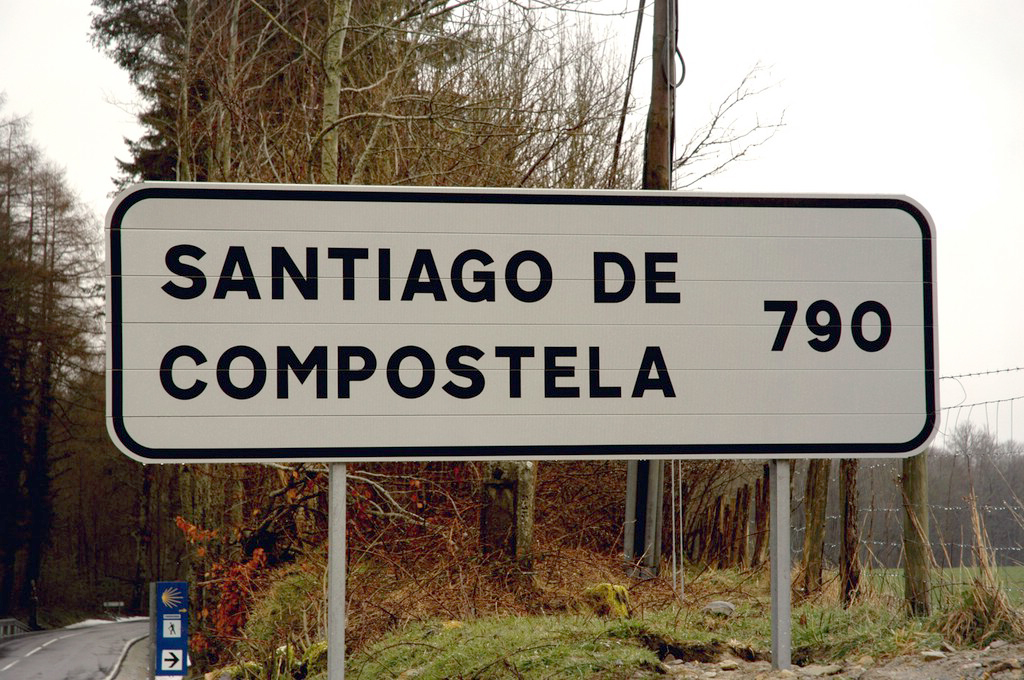TOWARDS COMPOSTELA
Joint message of the Spanish and French bishops from the dioceses “crossed” by the pilgrimage to the tomb of Apostle James

An ancient journey into the heart of Europe that marked the personal and spiritual story of millions of pilgrims: it’s the Route of Santiago de Compostela, covered by multitudes of men and women since the Middle Ages, through France and Spain, in order to reach the shrine where according to tradition is buried Apostle James the Greater, an 800-kilometers route, amounting to a one-month journey. The route that crosses France and Spain has been declared World Heritage by UNESCO, while on 23 October 1987 the Council of Europe recognized the importance of the route by proclaiming the Way of Santiago “European Cultural Route”. In this “golden corner” of the history and culture of Europe, the French and Spanish bishops of the dioceses along the route of the pilgrimage, have devoted a pastoral letter titled “The Way of St James: search and encounter”. The purpose of the easily readable text is “to restore spiritual meaning” to an experience that over time has lost its original religious inspiration to transform it into an event of tourist attraction by tour operators and travel agencies. Identikit of the pilgrims. The number of visitors travelling along the Santiago Route has grown year after year. According to figures collected by the Oficina de acogida al peregrino, in 2014 the number of pilgrims increased by 10.2% compared to 2013. Italians actually increased by almost 29.6%, amounting to 20,241 – exceeding by far the Germans and representing the largest national group after the Spanish. The constant growth of Americans and Koreans is equally worthy of note. The Oficina has already collected data on 2015: during the month of July, 44,799 pilgrims have walked the path of Compostela. In the same period in 2010 they were 42,472. Of these pilgrims, 48.8% are women and 51.2% men. The vast majority follows the route on foot (91.8%). But there are also those who do so by bicycle (8.0%), or even on horseback (0.2%), 0.02% in wheelchairs. The route is also appreciated by the younger. In fact, 41.8% of those who choose Santiago de Compostela as a holiday destination are youths under 30 years. The majority of the pilgrims – 48.2% – are between 30 and 60 years-old. 43.2% of the pilgrims have decided to undertake the path for religious motivations; the majority (49.2%) for religious-cultural reasons while 7.6% for cultural reasons only. The misunderstanding of tour operators. Since 2009, on the initiative of Monsignor Julián Barrio Barrio, Bishop of Compostela, the bishops of the two countries have held regular meetings for the joint promotion of pastoral evangelization on the Way of St. James. This year, after years of work and discussion, they published a common pastoral letter. This route – explained Monsignor Marc Aillet, Bishop of Bayonne – has its very peculiar trait: it is a path of faith and a communication of faith. Since the Middle Ages, this route has contributed to the shaping of Europe, sharing the values of the Gospel through the travels of so many Christian pilgrims”. However, in time, and today in particular, its Christian matrix has lost some of its appeal. “A number of lay cultural associations, in some cases deeply secularist, as well as tour operators, have taken over the management of the Way and gradually emptied it of its spiritual significance, to transform it into a cultural tourist route like many others”. Quest of meaning and conversion of the heart. This led to the need to make of the way to Compostela a path of evangelization, in the awareness that the majority of those who undertake it don’t do so on religious grounds. “However – added the bishop of Bayonne – we feel that undertaking this journey signals a quest for meaning, for a fresh breath in life: the desire to break away from the accelerated pace of today to follow the pace of creation, the pace man. Many have told us that along the Way they had several encounters, with God and with Christ”. The letter contains an appeal to parishes located along the route of Compostela and to the religious communities who welcome the pilgrims: “Come out on the road and evangelize; welcoming those whom you meet, inviting them to visit your churches, explaining faith and art; opening spaces for dialogue with them, supporting them in their pilgrimage. Invite them to a conversion of the heart, to the infinite mercy of God through the Word and the sacraments”.